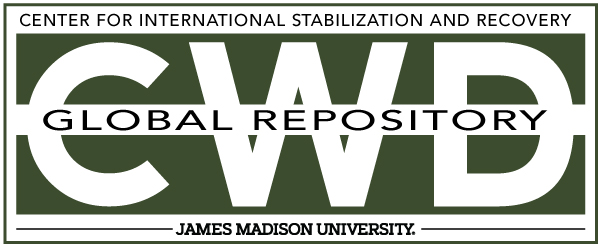Third Annual Progress Report on the Implementation of the Global Field Support Strategy
Document Type
Other
Creative Commons License

This work is licensed under a Creative Commons Attribution-Noncommercial-No Derivative Works 4.0 License.
Publication Date
2012
Keywords
Centers and Organizations, advocacy and international law, United Nations, UN, DPKO, 2012
Abstract
In his report on the global field support strategy (A/64/633), the Secretary- General presented a comprehensive organizational change initiative aimed at improving service delivery to United Nations field missions. The goal of the strategy is to establish, over a five-year period, a more client-oriented service delivery model capable of meeting the following objectives:
(a) Expedited and improved service delivery to the field;
(b) Improved support to peacekeeping and peacemaking mandate delivery;
(c) Strengthened resource stewardship, efficiencies and economies of scale;
(d) Improved staff safety, security and quality of life;
(e) Strengthened accountability.
The General Assembly, in its resolution 64/269, requested that the Secretary- General submit an annual progress report on the implementation of the global field support strategy. Recalling paragraph 194 of the report of the Advisory Committee on Administrative and Budgetary Questions (A/66/718) and paragraph 203 of the report of the Board of Auditors on United Nations peacekeeping operations (A/66/5 (Vol. II)), the Assembly, in resolution 66/264, further requested that the Secretary- General submit to the General Assembly his all-encompassing end-state vision for the global field support strategy.
The present report presents the vision of the Secretary-General for the end state and outlines how the pillars of the global field support strategy (human resources, finance, modularization/supply chain and service centres) will transform support services at all four levels: United Nations Headquarters, the Global Service Centre, the Regional Service Centre and the missions. It further highlights progress achieved since the issuance of the last progress report of the Secretary-General (A/66/591 and Add.1) and identifies critical next steps towards attaining the desired end state. It lays out the path towards improved support to deployed personnel in the field as well as to Headquarters partners, including the Department of Peacekeeping Operations — with whom the Department of Field Support shares specific services in support of United Nations peacekeeping — and other institutional partners such as the Department of Political Affairs and the Department of Management. The report reflects that, midway towards implementation, the global field support strategy has already yielded substantial results, including with respect to improvements in rapid mission start-up, process streamlining, efficiency gains and programme management and oversight.
In response to the request of the Advisory Committee on Administrative and Budgetary Questions (A/66/718, paras. 189 and 191) that the Secretariat consider alternative arrangements to improve the reporting process on the global field support strategy and facilitate the decision-making process of the General Assembly through accurate, complete and transparent reporting, the Secretariat will address the requests of the Assembly in two separate reports: (a) the third progress report of the Secretary-General on the implementation of the global field support strategy, and (b) dedicated annexes to the report of the Secretary-General on the overview of the financing of United Nations peacekeeping operations for the period from 1 July 2013 to 30 June 2014. The intention of the two-step process is to avoid duplication and redundancy and to facilitate access to relevant information by the committees of the General Assembly by separating the reporting requirements related to the high-level strategic end-state vision of the global field support strategy from the financial details pertaining to its implementation.



